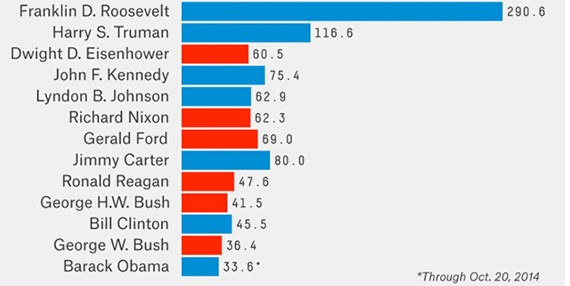

The results of the 2020 elections might offer insights into whether this strategy was effective for the current President. Trump’s record might embolden future presidents to act against public opinion. Yet in the first two years of holding office, President Trump issued close to 100 executive orders-though not all of these would be considered “significant”-conflicting with almost 60 years of precedent. Donald Trump’s approval ratings have been historically low. How does President Trump fare?Ĭhristenson and Kriner note that the Trump presidency so far has been an outlier to this model. The connection between public opinion and executive action by presidents is a one-way relationship: public opinion influences the issuance of executive orders, but executive actions do not have a significant impact on public opinion.

While carelessly chosen executive orders could risk a popular backlash, precisely because presidents are strategic when acting unilaterally, the authors find that issuing executive orders does not have any systematic impact on approval ratings.

Rather, presidents feel more confident in issuing executive orders when their approval ratings are high. Similarly, presidents do not issue more significant executive orders when they are saddled with low approval ratings. When are presidents more likely to issue executive orders?Įchoing prior findings, Christenson and Kriner find no evidence that presidents increasingly resort to executive action when they face a hostile Congress. They test this against the “evasion hypothesis”: low approval ratings encourage presidents to increasingly go it alone and issue more significant executive orders. But increases in approval ratings embolden presidents to issue a greater number of significant executive orders. Presidents with low approval ratings shy away from major unilateral action (acting alone through executive orders, usually without consulting or discussions through Congress). Given how crucial they believe public opinion to be for decisions to exercise executive actions, the authors present a “political constraint hypothesis”. In both cases, they then combine the data on executive orders with Gallup poll data on presidential approval. They also use an alternative measure of executive order significance drawn from combining multiple sources of coverage, including historical overviews, newspapers, magazines, and law reviews. A significant order is one that receives coverage in the New York Times within a year from when it was issued. They count “significant” executive orders issued by presidents between 19. However, academic work on executive action offers contrasting predictions for how public opinion might matter, and no prior study has proven its influence empirically. It shouldn’t be surprising then, that those who study presidents have assumed that public opinion shapes their use of executive orders. Finally, Congress’s reaction itself influences public opinion to positions taken by the president. Second, poor presidential approval ratings can embolden opponents in Congress to use non-legislative tools, such as investigative oversight, to further weaken presidential power. First, it is a crucial tool that presidents use to convince Congress to support their policy goals. Public opinion can make or break a president’s time in office. Dino Christenson and Douglas Kriner’s new research provides evidence that public opinion constrains presidents’ use of executive powers. This is always a risk: going over Congress’s head to enact legislation could result in popular backlash. But this is not unique to the current president recent US presidents have relied heavily on executive orders to push through their policy priorities. President Donald Trump has issued 19 executive orders in 2019 alone. Kriner’s, Cornell University new article, “Does Public Opinion Constrain Presidential Unilateralism?”

This piece, written by Nandini Dey, covers Dr. In the APSA Public Scholarship Program, graduate students in political science produce summaries of new research in the American Political Science Review.


 0 kommentar(er)
0 kommentar(er)
